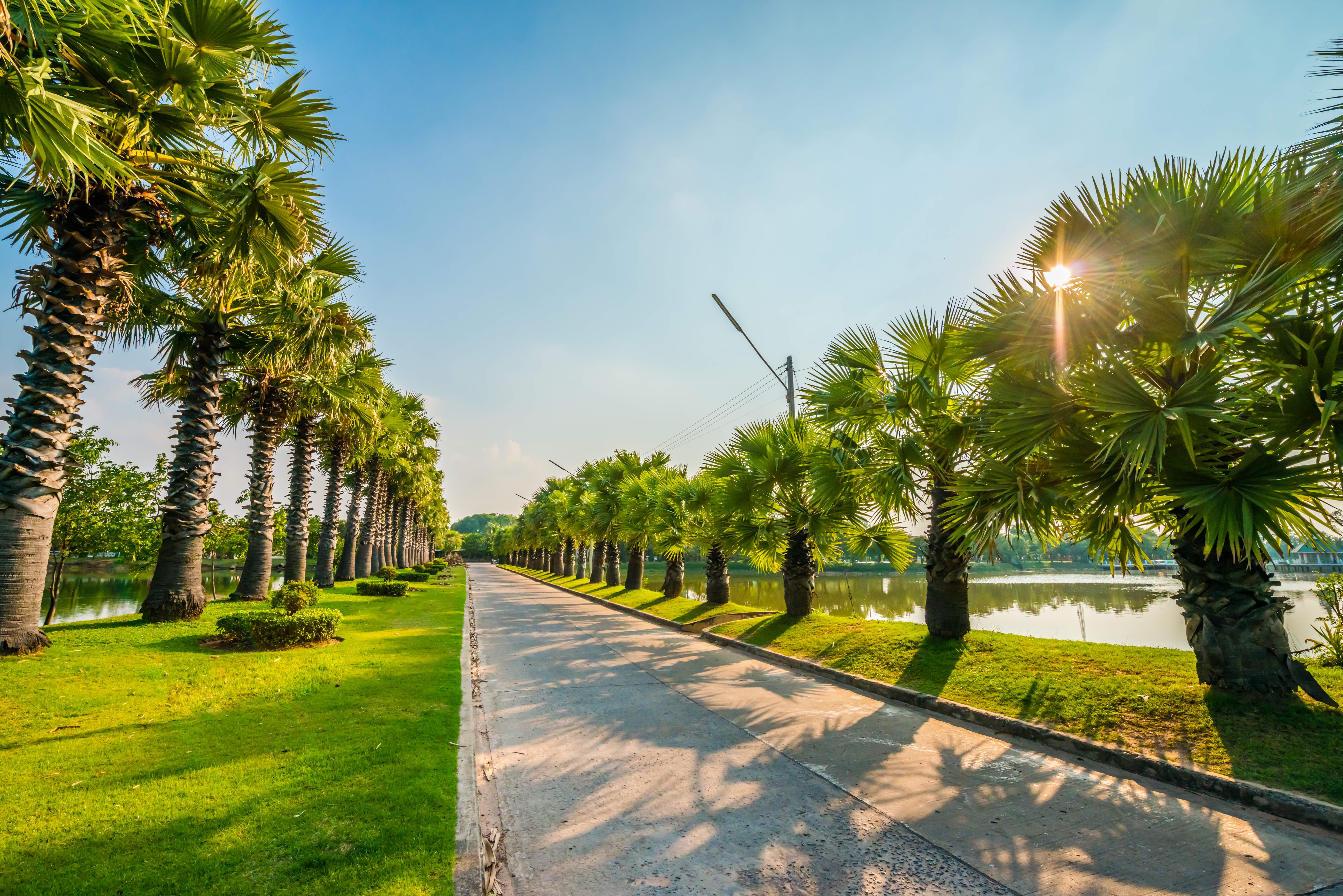Polystorm - Geocellular Water Management System
Polystorm is an efficient and versatile geocellular water management system for Sustainable urban Drainage Systems (SuDS) compliant attenuation, det

As the temperature begins to cool and the morning fog thickens, the first signs of winter are upon us. With this, comes ‘Al Wasmi’ - the Arabian Peninsula’s official rainy season. Running from October 16th to December 6th, Al Wasmi lasts for 52 days and is celebrated as ‘the first spring’, prompting the growth of wild flowers, desert plants, and seasonal herbs.
That being said, Al Wasmi also has a dark side. In a region poorly equipped for rainfall, the short but severe storms trigger dangerous flash floods, intensified by the impermeable urban environment.
The question remains, how do we maximise the benefits brought about by this sporadic rainfall while minimising the risks? Greater interactivity between urban planning and flood risk modelling.
Water Sensitive Urban Design (WSUD)
WSUD is a planning and design approach to water management in towns and cities, which addresses issues surrounding both water quantity and water quality. Essentially, WSUD integrates a sustainable urban water cycle, including the responsible management of stormwater, wastewater and groundwater, into urban design to reduce potential harm to the surrounding environment.
In natural water management cycles, an effective source control strategy uses plants and soil to intercept, absorb and filter rainfall. This reduces surface runoff and helps to maintain stable groundwater and soil moisture levels. Operating like a sponge, the soil and vegetation retain and release water through collection and attenuation. WSUD are designed to mimic natural water cycles but adapt these to suit the built environment. The resulting ‘green’ infrastructure which is created in the process, aims to:
The challenge with conventional ‘grey’ infrastructure is that it moves stormwater along a network of gutters, pipes and tunnels, away from inhabited areas and into treatment plants, or nearby water bodies. Its capacity to manage the intense surges of surface runoff that accompany flash floods is limited, not to mention the toll this approach takes on the environment. The water picks up trash, bacteria, and other pollutants along the way, which are then deposited in the local waterways.
Aside from the environmental issues associated with grey infrastructure, it also comes with social and economic disadvantages. In this region particularly, the rarely used drain inlets become blocked as a result of frequent sand storms, causing the network to easily overflow. The overwhelming volume of surface runoff during intense rainfall creates dangerous floods that not only damage property, but also put lives at risk.
WSUD and the implementation of green infrastructure is considered a risk-free solution with its minimal side effects and high effectiveness. A comparative cost analysis between grey and green infrastructure concluded that, if well designed and maintained, green infrastructure is more cost effective to construct and maintain than its concrete counterpart. To read more on this topic, check out our blog on why contractors love plastic.
While most traditional grey infrastructure has a single function, green infrastructure is multi-functional. Predominantly designed to reduce the volume, rate and peak flows of stormwater runoff and filter pollutants out of the discharge, WSUD offers countless other value-added benefits. Green infrastructure promotes:
Generally, contributing in diverse ways to the creation of a more sustainable urban environment.
The Importance of WSUD in the GCC
The Middle East is currently warming at twice the rate of the rest of the world. Already, temperatures across Saudi Arabia have risen by 2% since the 1980s. The warming atmosphere's ability to hold more water vapour extends the duration of extreme weather events and increases flood risk. In fact, we’re already beginning to witness the effects. In July and August, all 6 GCC states were impacted by heavy rainfall - the first time the arid region has seen rain during summer months in over 30 years.
But through a proper water management strategy, flooding can be transformed into a valuable opportunity for water collection, with the potential to reduce strain on limited groundwater supplies and energy-intensive desalination processes. Hence why WSUD and the practice of storing and reusing rainwater are key steps in the natural evolution of modern communities in the GCC.
Click here to learn more about the ways in which the Gulf states are combating water scarcity.
The Future of Water Management
As part of Polypipe Middle East’s extensive range of innovative drainage, rainwater and water management systems, our geocellular water management solution, Polystorm, offers a one-stop approach to surface water attenuation, detention and soakaway.
By collecting and storing stormwater channelled from buildings’ rainwater outlets and surface drains in subsurface tanks, Polystorm can mitigate flood risk in urban areas by up to 80%. The adaptable, and versatile design is engineered to cope with a variety of applications, from large commercial developments to schools, and residential areas.
With each Polystorm cell capable of storing up to 190 litres, the large volume of captured water can be reused for anything from agriculture and irrigation, to industrial processes and groundwater replenishment. This cyclic approach offers a more sustainable alternative to the conventionally linear systems in which surface runoff and stormwater is treated as a waste product. Additionally, with around 70% of the UAE’s total water consumption going towards irrigation, a more circular approach to water management not only reduces water scarcity, but also has the potential to save up to $2.1 billion a year on desalination!
To find out more about how Polypipe Middle East can help you to adopt sustainable water management practices through bespoke, fit-for-purpose solutions, contact our technical team.
Tel: +971 (0) 4 518 3000
Email: middleeast@polypipe.com
Polystorm is an efficient and versatile geocellular water management system for Sustainable urban Drainage Systems (SuDS) compliant attenuation, det